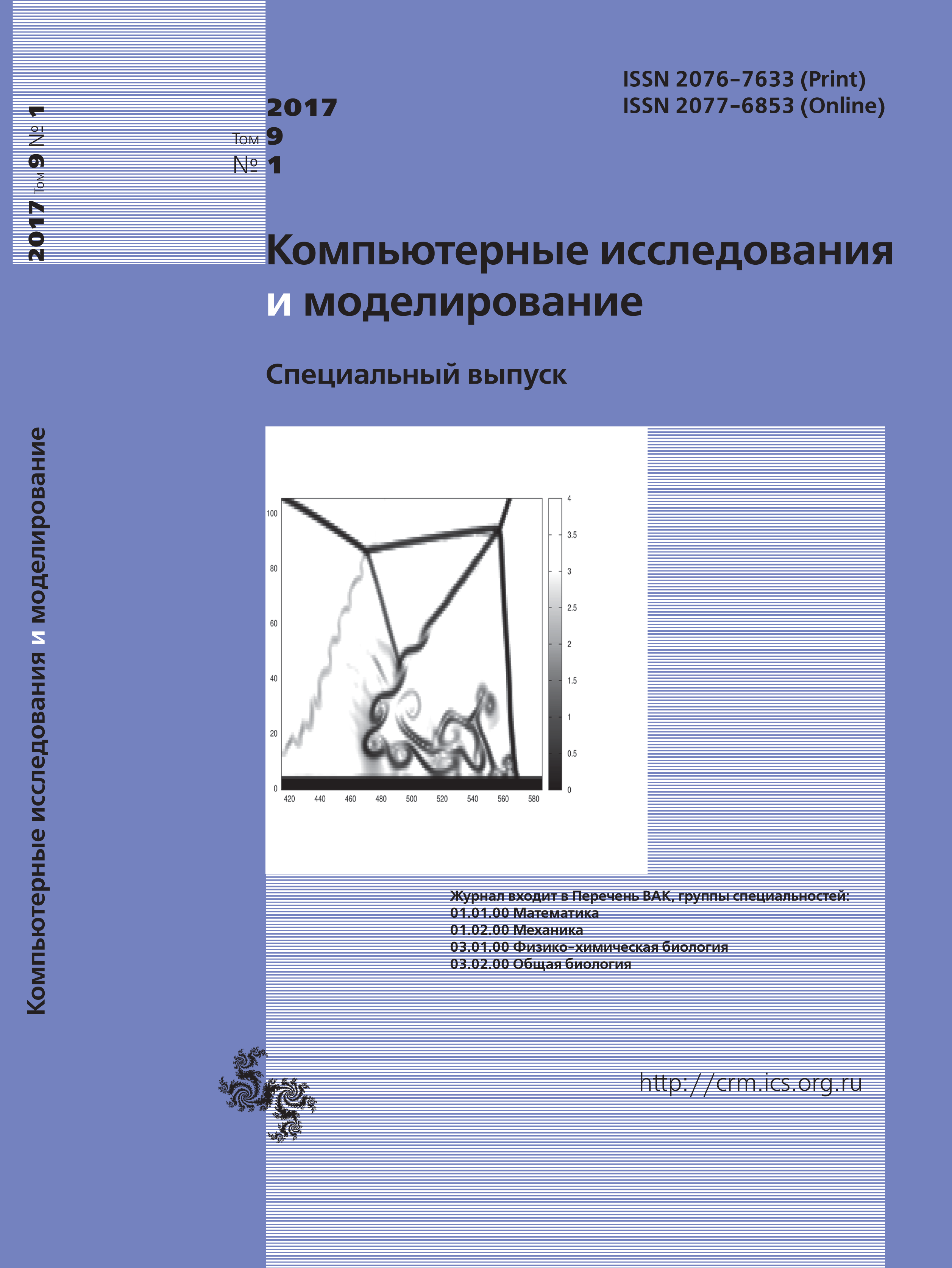All issues
- 2025 Vol. 17
- 2024 Vol. 16
- 2023 Vol. 15
- 2022 Vol. 14
- 2021 Vol. 13
- 2020 Vol. 12
- 2019 Vol. 11
- 2018 Vol. 10
- 2017 Vol. 9
- 2016 Vol. 8
- 2015 Vol. 7
- 2014 Vol. 6
- 2013 Vol. 5
- 2012 Vol. 4
- 2011 Vol. 3
- 2010 Vol. 2
- 2009 Vol. 1
Numerical investigations of mixing non-isothermal streams of sodium coolant in T-branch
Numerical investigation of mixing non-isothermal streams of sodium coolant in a T-branch is carried out in the FlowVision CFD software. This study is aimed at argumentation of applicability of different approaches to prediction of oscillating behavior of the flow in the mixing zone and simulation of temperature pulsations. The following approaches are considered: URANS (Unsteady Reynolds Averaged Navier Stokers), LES (Large Eddy Simulation) and quasi-DNS (Direct Numerical Simulation). One of the main tasks of the work is detection of the advantages and drawbacks of the aforementioned approaches.
Numerical investigation of temperature pulsations, arising in the liquid and T-branch walls from the mixing of non-isothermal streams of sodium coolant was carried out within a mathematical model assuming that the flow is turbulent, the fluid density does not depend on pressure, and that heat exchange proceeds between the coolant and T-branch walls. Model LMS designed for modeling turbulent heat transfer was used in the calculations within URANS approach. The model allows calculation of the Prandtl number distribution over the computational domain.
Preliminary study was dedicated to estimation of the influence of computational grid on the development of oscillating flow and character of temperature pulsation within the aforementioned approaches. The study resulted in formulation of criteria for grid generation for each approach.
Then, calculations of three flow regimes have been carried out. The regimes differ by the ratios of the sodium mass flow rates and temperatures at the T-branch inlets. Each regime was calculated with use of the URANS, LES and quasi-DNS approaches.
At the final stage of the work analytical comparison of numerical and experimental data was performed. Advantages and drawbacks of each approach to simulation of mixing non-isothermal streams of sodium coolant in the T-branch are revealed and formulated.
It is shown that the URANS approach predicts the mean temperature distribution with a reasonable accuracy. It requires essentially less computational and time resources compared to the LES and DNS approaches. The drawback of this approach is that it does not reproduce pulsations of velocity, pressure and temperature.
The LES and DNS approaches also predict the mean temperature with a reasonable accuracy. They provide oscillating solutions. The obtained amplitudes of the temperature pulsations exceed the experimental ones. The spectral power densities in the check points inside the sodium flow agree well with the experimental data. However, the expenses of the computational and time resources essentially exceed those for the URANS approach in the performed numerical experiments: 350 times for LES and 1500 times for ·DNS.
Copyright © 2017 Aksenov A.A., Zhluktov S.V., Shmelev V.V., Shaporenko E.V., Shepelev S.F., Rogozhkin S.A., Krylov A.N.
Views (last year): 3.Indexed in Scopus
Full-text version of the journal is also available on the web site of the scientific electronic library eLIBRARY.RU
The journal is included in the Russian Science Citation Index
The journal is included in the RSCI
International Interdisciplinary Conference "Mathematics. Computing. Education"







